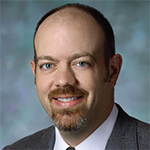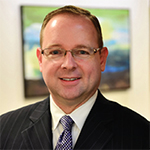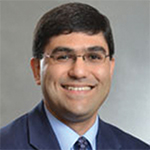
Image Credit: Christos Georghiou/shutterstock.com
Two of the great traditions of medicine are the curbside and party consults. In the former, participating physicians informally discuss an especially difficult diagnostic problem. During the latter, a patient will approach the doctor to ask about some possible medical problem and what they should do about it.
The advent of the Internet has brought about the idea of crowdsourcing or the process of seeking a problem’s solution from a wide community. This allows expert (and possibly not so expert) opinion from a wide range of experience (or lack thereof) that might not be otherwise available.
“In a lot of respects, crowdsourcing can be looked upon as the online equivalent of someone approaching you for some advice,” says Christopher Collins, MD, program director, Division of Rheumatology, MedStar Washington Hospital Center in the District of Columbia. “Crowdsourcing has been done for years, and we often do basically the same thing in e-mailing or talking amongst colleagues within a single institution. This is a similar concept—just on a much larger platform.
Currently, there are two types of crowdsourcing. One is physician initiated, in which the physician posts relevant (but HIPAA sanitized) case reports or images for comment and suggestions. In most cases, these are restricted to only physicians. Examples of this type include HealthTap, Doximity and Sermo.

Dr. Collins
The other group is patient centered, in which the consumers themselves provide the information and ask others to suggest other tests or diagnoses that could be considered. The responders may not always be physicians. CrowdMed.com is an example.
“From what I have seen [while] participating in CrowdMed, a significant percentage of the patients may actually have rheumatic diseases,” says Dr. Collins. “As a concept, it has the potential to be useful for these participants. Very few of these cases are straightforward, and that is the challenge of these diagnoses, which attract patients to these kinds of sites. If they were easily diagnosed, they wouldn’t need the help of others to pool their thoughts together and [come up with] alternative possibilities.
CrowdMed allows a person to share their story on the site, where participants called medical detectives can see and comment on it. They may or may not be physicians, although most are. Both patients and responders can post anonymously.
After going through an assessment process, the top three suggestions are passed along to the patient. The detectives can earn small amounts of money, but Dr. Collins says the draw for him is simply the challenge of solving complex medical problems.
Concerns
There are some concerns with this type of crowdsourcing. One is a problem that seems inherent any time the Internet is used.
“Your patient may return to the physician and say that the people on CrowdMed think I have this bizarre disease, and you should order all these [high-dollar] tests,” says Dr. Collins. “However, it is the physician taking care of the patient who still has to make these decisions. It isn’t at all a bad thing to have these kinds of conversations with your patients, and there is some inherent benefit in patients being more involved in their own healthcare. Most of the people on these websites have had no clear diagnosis for many years in some cases. It’s hard to fault anyone for seeking additional help.”
There are some legal concerns that physicians will want to think about when replying to patient requests—not the least of which is avoiding even the hint of a patient–physician relationship.
“Out-of-the-office consults are always dangerous, whether over the Internet or at a party, because the [doctors] give advice without performing a full history and physical examination,” says David Walsh, JD, a healthcare attorney in the Dallas office of Chamblee, Ryan, Kershaw and Anderson PC. “I would be worried about patient-centered websites for similar reasons and would probably advise my clients to be very careful about what they say.”
CrowdMed has the physicians post anonymously, which might alleviate some of these concerns. However, a subpoena would quickly breach this protection.

Dr. Walsh
Mr. Walsh also suggests that physicians preface every interaction with a statement that you are not practicing medicine, rather suggesting things the patient can take back to their doctor for further evaluation.
The fact that you may be in one state and the patient in another, at least theoretically, opens up a physician to licensing issues. For example, the state where the patient resides could decide you are practicing in their state without a license. Mr. Walsh knows of no examples in which this has yet happened, but if a state were to take that position, litigating it could be very expensive because this is new law.
Similarly, a physician could run afoul of the various telemedicine laws across the country (Note: Also see “Legalities of Telemedicine”). He points to the very strict laws about telemedicine in his home state of Texas, where the current rules prohibit treating a patient remotely until you have done a history and physical examination in person.
Another problem is that the concept of patient-centered crowdsourcing of a diagnosis is so new. There really isn’t any case law to guide either the practitioner or their attorney when looking at liability.
“Currently, my advice would be to stay away from patient-initiated diagnosing,” Dr. Walsh says. “The potential for trouble is a lot more than any benefit you might get out of it. If you want to participate, be very careful on how you word your interactions, as you would in other outside- the-office situations.”
Physician to Physician
Another method of crowdsourcing allows a physician to get help with diagnostic dilemmas from other doctors. Examples of this kind include such sites as sermo.com, healthtap.com and doximity.com. These platforms allow physicians to post questions and get answers from others in their field, often in close to real time.
“I doubt these will ever replace the traditional curbside consult or being able to call up a subject matter expert,” says Soumya D. Chakravarty, MD, PhD, FACP, FACR, an assistant professor of medicine in the Rheumatology Division at the Drexel University College of Medicine. “I think these are complementary to the traditional sources of information instead of a replacement.”
Find What Works for You
All of the websites work a little differently, so an individual physician may want to try more than one to find which works best for them. The sites generally have you log in using a username and password that then takes you to a personalized home page. Links will be available to help you post a question, assist in finding responses and ways to find and follow discussions about problems posted by others. There may also be links to surveys, educational material and other general information.

Dr. Chakravarty
“One of the best advantages is the instantaneous response you can get,” says Dr. Chakravarty. “Having another set of eyes and a different mind with different training and experiences to think about your problem can usually help.”
Who’s Responding?
A concern expressed about these doctorto- doctor platforms is that you don’t know the person making the suggestions. The curbside consults are with colleagues you know, and the noted experts are well known in their fields.
“These [sites] generally verify that you are credentialed and licensed before you can post,” notes Dr. Chakravarty. “As part of their due diligence, they usually ask about your specialty areas and board certification. That can provide a filter from the get-go.”
However, as with the traditional methods, you still have to evaluate the suggestions. As with any input from any source, you look at it in the context of standards of care, the evidence available and your usual evaluation techniques.
Although fewer, there are still legal concerns the physician will have to think about when participating in one of these physician-initiated sites. The main one, according to Dr. Walsh, goes back to the relatively anonymous nature of the platforms.
“The one thing that makes me a little hesitant is that the responding providers are not necessarily acknowledged experts in the field,” he says. “There is no real quality control over the kind of doctor responding or any really good way to screen what the crowd suggests you do. At the end of the day, I have less concern about this type of crowdsourcing because the patient’s doctor is still making the decisions on what options to follow.”
Thrill of the Hunt
For physicians participating in patientinitiated or doctor-initiated websites, there is a certain thrill of the hunt involved—especially because the posts are most often by those who have reached the limits of diagnostic abilities and still haven’t found an answer.
“For me, it goes back to the inner drive of all physicians to contribute to the betterment of patient care,” says Dr. Chakravarty. “The desire to diagnose and develop a treatment plan is overarching, and helping a colleague will benefit the patient. That is what drives us every day.”
Kurt Ullman is a freelance writer based in Indiana.

